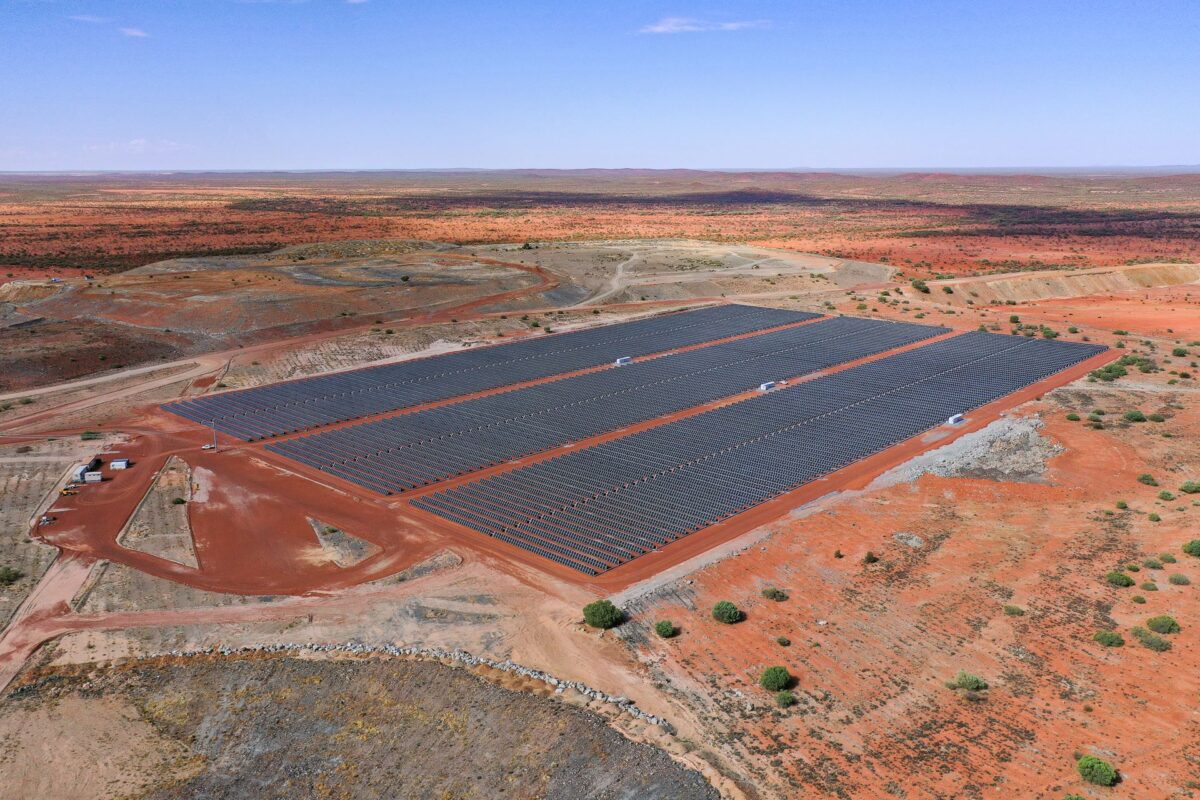Installed in four locations across the Midwest of Western Australia, the systems comprise 28 MW of solar, 11.5 MW of battery energy storage (BESS) and 42.5 MW of high-efficiency gas generation. They were delivered under a seven-year build-own-operate agreement.
The hybrid systems also have emergency hydrocarbons-off functionality, which enables uninterrupted mining operations using solar and BESS during system outages and other critical situations.
Four sites have been constructed at Westgold’s Tuckabianna, Bluebird, Fortnum, and Big Bell facilities, and are expected to collectively displace 38 million litres of diesel every year and cut carbon emissions by up to 57,000 tonnes annually.
Perth-headquartered Pacific Energy centred the design of the hybrid systems around its virtual generator (VG) BESS technology, which integrates renewable energy sources and dynamically stabilises the power systems, marking a shift away from thermal generation as the primary source of system stability.
An evolution of grid forming BESS technology, VG BESS can mimic the rotating mass present in thermal generators, providing for the first time the ability to stabilise large-scale power systems without burning fuel or using legacy technologies like synchronous condensers.
Pacific Energy’s Chief Executive Officer, Jamie Cullen said they approached the systems design with a future-focused mindset to support the increasing sophistication of future renewable energy technologies and ensure delivering client decarbonisation outcomes.
Westgold’s Managing Director and CEO, Wayne Bramwell, said powering Westgold’s operations with renewables was at the heart of its Clean Energy Transition Project, which is set to improve the company’s environmental efficiencies and reduce operating costs.
“Moving towards renewables works for Westgold as a business because it drives costs out. It also works for the environment because it significantly reduces carbon emissions and it sends a signal about our long-term view of building a sustainable business,” Bramwell said.
The Tuckabianna system, fully commissioned in August 2023, achieved an average of 31% solar penetration between November 2023 and January 2024, peaking at 36.9% in December.
Pacific Energy has more than 750 MW of contracted capacity under management with operations in Kalgoorlie, Victoria, Queensland, South Australia, and the Northern Territory and is owned by global investment manager Queensland Investment Corporation (QIC).
This content is protected by copyright and may not be reused. If you want to cooperate with us and would like to reuse some of our content, please contact: editors@pv-magazine.com.








1 comment
By submitting this form you agree to pv magazine using your data for the purposes of publishing your comment.
Your personal data will only be disclosed or otherwise transmitted to third parties for the purposes of spam filtering or if this is necessary for technical maintenance of the website. Any other transfer to third parties will not take place unless this is justified on the basis of applicable data protection regulations or if pv magazine is legally obliged to do so.
You may revoke this consent at any time with effect for the future, in which case your personal data will be deleted immediately. Otherwise, your data will be deleted if pv magazine has processed your request or the purpose of data storage is fulfilled.
Further information on data privacy can be found in our Data Protection Policy.